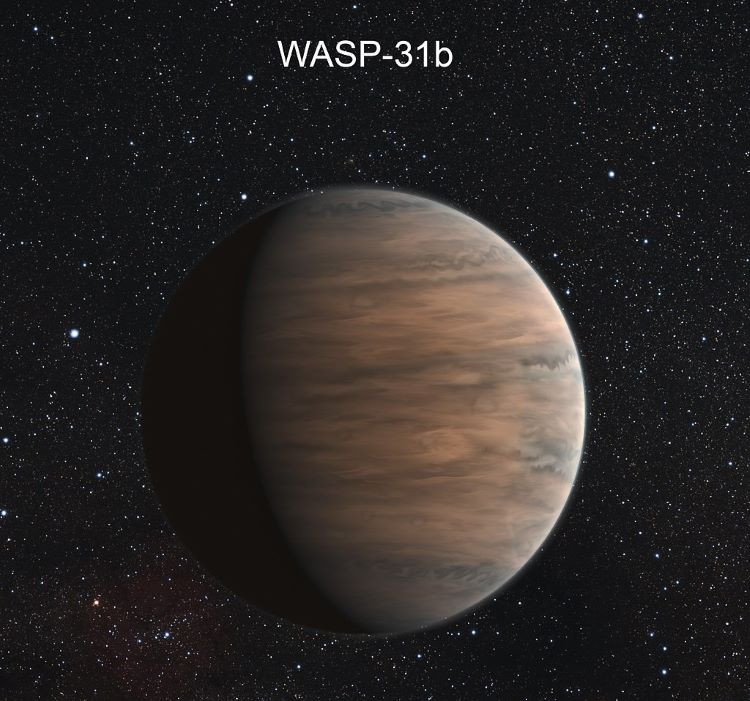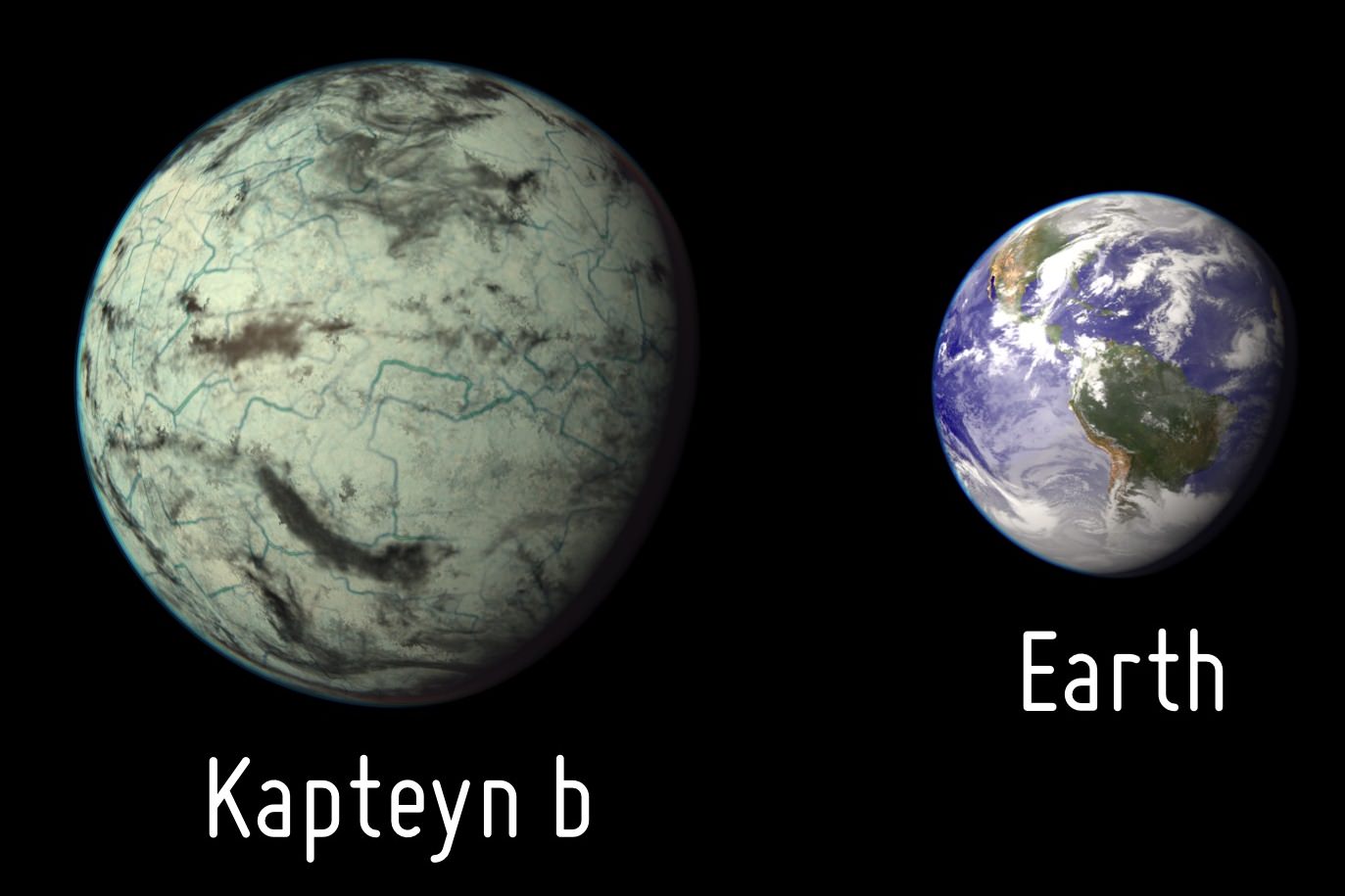A recent study published in The Astrophysical Journal Letters examines a rare alloy molecule known as chromium hydride (CrH) and its first-time confirmation on an exoplanet, in this case, WASP-31 b. Traditionally, CrH is only found in large quantities between 1,200 to 2,000 degrees Kelvin (926.85 to 1,726.85 degrees Celsius/1700 to 3,140 degrees Fahrenheit) and used to ascertain the temperature of cool stars and brown dwarfs. Therefore, astronomers like Dr. Laura Flagg in the Department of Astronomy and Carl Sagan Institute at Cornell University refer to CrH as a “thermometer for stars”.
Continue reading “Astronomers Confirm First Exoplanet “Thermometer Molecule” that is Typically Used to Study Brown Dwarfs”A Third of Planets Orbiting Red Dwarf Stars Could be in the Habitable Zone
A recent study published in the Proceedings of the National Academy of Sciences, a pair of researchers from the University of Florida (UF) examine orbital eccentricities for exoplanets orbiting red dwarf (M dwarf) stars and determined that one-third of them—which encompass hundreds of millions throughout the Milky Way—could exist within their star’s habitable zone (HZ), which is that approximate distance from their star where liquid water can exist on the surface. The researchers determined the remaining two-thirds of exoplanets orbiting red dwarfs are too hot for liquid water to exist on their surfaces due to tidal extremes, resulting in a sterilization of the planetary surface.
Continue reading “A Third of Planets Orbiting Red Dwarf Stars Could be in the Habitable Zone”The Planet That Shouldn’t Exist

As of this writing, almost 5300 exoplanets spanning approximately 4000 planetary systems have been confirmed to exist in our universe. With each new exoplanet discovery, scientists continue to learn more about planetary formation and evolution that has already shaken our understanding of this process down to its very core. One such example is “Hot Jupiters”, which are Jupiter-sized exoplanets, or larger, that orbit closer to their parents stars than Mercury does to our own. This is in stark contrast to our own Solar System, which has rocky planets closer towards our Sun and the gas giant planets much farther out.
Continue reading “The Planet That Shouldn’t Exist”TESS has Found A Second Earth-Sized World in This System. Exoplanet Science is Maturing

For planet-hunters, finding an Earth-sized exoplanet must be special. NASA estimates there are about 100 billion planets in the Milky Way, but the large majority of the 5,000+ exoplanets we’ve found are extremely inhospitable. So finding one that’s similar to ours is kind of comforting.
In this case, it’s even more interesting because it’s the second Earth-sized planet orbiting the same star.
Continue reading “TESS has Found A Second Earth-Sized World in This System. Exoplanet Science is Maturing”Planetary Interiors in TRAPPIST-1 System Could be Affected by Stellar Flares
In a recent study published in The Astrophysical Journal Letters, an international team of researchers led by the University of Cologne in Germany examined how stellar flares and coronal mass ejections (CMEs) erupted by the TRAPPIST-1 star could affect the interior heating of its orbiting exoplanets. This study holds the potential to help us better understand how solar flares affect planetary evolution. The TRAPPIST-1 system is an exolanetary system located approximately 39 light-years from Earth with at least seven potentially rocky exoplanets in orbit around a star that has 12 times less mass than our own Sun. Since the parent star is much smaller than our own Sun, then the the planetary orbits within the TRAPPIST-1 system are much smaller than our own solar system, as well. So, how can this study help us better understand the potential habitability of planets in the TRAPPIST-1 system?
Continue reading “Planetary Interiors in TRAPPIST-1 System Could be Affected by Stellar Flares”Watch This Amazing Video of an Exoplanet in Motion

Exoplanet Beta Pic b orbiting Beta Pictoris from Dunlap Institute on Vimeo.
Just. Wow. The motion of an alien world, reduced to a looping .gif. We truly live in an amazing age. A joint press release out of the Gemini Observatory and the University of Toronto demonstrates a stunning first: a sequence of direct images showing an exoplanet… in motion.
The world imaged is Beta Pictoris b, about 19 parsecs (63 light years) distant in the southern hemisphere constellation Pictor the Painter’s Easel. The Gemini Planet Imager (GPI), working in concert with the Gemini South telescope based in Chile captured the sequence.
The images span an amazing period of a year and a half, starting in November 2013 and running through April of earlier this year. Beta Pictoris b has an estimated 22 year orbital period… hey, in the year 2035 or so, we’ll have a complete animation of its orbit!
Current estimates place Beta Pictoris b in the 7x Jupiter mass range, about plus or minus 4 Jupiter masses… and yes, the high end of that range is flirting with the lower boundary for a sub-stellar brown dwarf. Several exoplanet candidates blur this line, and we suspect that the ‘what is a planet debate?’ that has plagued low mass worlds will one day soon extend into the high end of the mass spectrum as well.
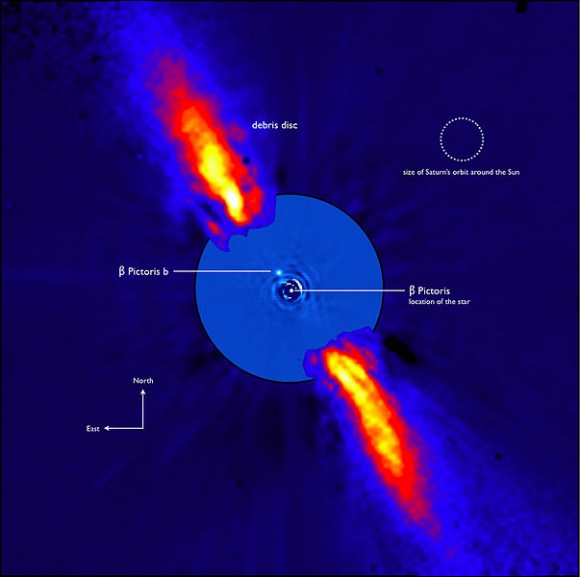
Beta Pictoris has long been a target for exoplanetary research, as it is known to host a large and dynamic debris disk spanning 4,000 astronomical units across. The host star Beta Pictoris is 1.8 times as massive as our Sun, and 9 times as luminous. Beta Pic is also a very young star, at an estimated age of only 8-20 million years old. Clearly, we’re seeing a very young solar system in the act of formation.
Orbiting its host star 9 astronomical units distant, Beta Pictoris b has an orbit similar to Saturn’s. Place Beta Pictoris b in our own solar system, and it would easily be the brightest planet in the sky.
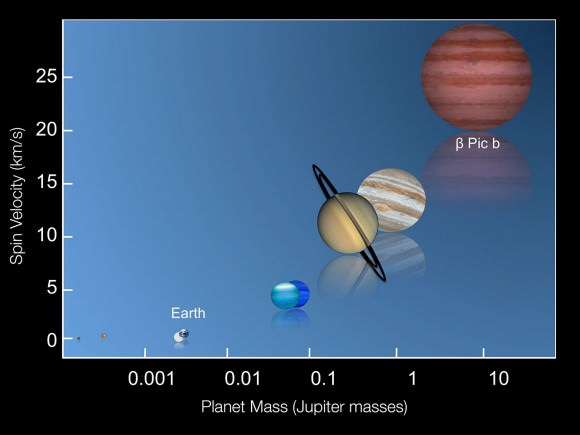
“The images in the series represent the most accurate measurements of a planet’s position ever made,” says astronomer Maxwell Millar-Blanchaer of the Department of Astronomy and Astrophysics at the University of Toronto in a recent press release. ‘With the GPI, we’re able to see both the disk and the planet at the exact same time. With our combined knowledge of the disk and the planet we’re really able to get a sense of the planetary system’s architecture and how everything interacts.”
A recent paper released in the Astrophysical Journal described observations of Beta Pictoris b made with the Gemini Planet Imager. As with bodies in our own solar system, refinements in the orbit of Beta Pictoris b will enable astronomers to understand the dynamic relationship it has with its local environment. Already, the orbit of Beta Pictoris b appears inclined out of our line of sight in such a way that a transit of the stellar disk is unlikely to occur. This is the case with most exoplanets, which elude the detection hunters such as the Kepler space telescope. As a matter of fact, watching the animation, it looks like Beta Pictoris b will pass behind the occluding disk and out of view of the Gemini Planet Imager in the next few years.
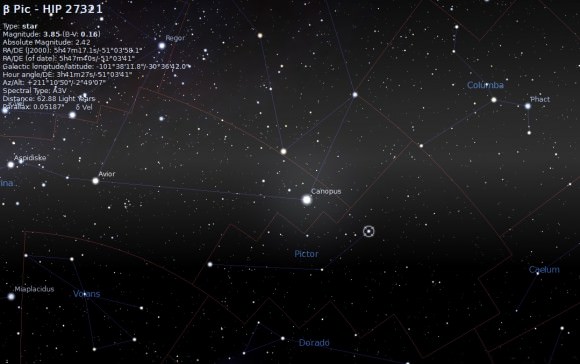
“It’s remarkable that Gemini is not only able to directly image exoplanets but is also capable of effectively making movies of them orbiting their parent star,” Says National Science Foundation astronomy division program director Chris Davis in Monday’s press release. The NSF is one of five international partners that funds the Gemini telescope program. “Beta Pic is a special target. The disk of gas and dust from which planets are currently forming was one of the first observed and is a famous laboratory for the study of young solar systems.”
The Gemini Planet Imager is part of the GPI Exoplanet Survey (GPIES), which discovered its first exoplanet 51 Eridani b just last month. The survey will target 600 stars over the next three years. The current tally of known exoplanets currently sits at 1,958 and counting, with thousands more in the queue courtesy of Kepler awaiting confirmation.
And as new spacecraft such as the Transiting Exoplanet Survey Satellite (TESS) take to orbit in 2018, we wouldn’t be surprised if the tally of exoplanets hits five digits by the end of this decade.
An amazing view of a brave new world in motion. It’s truly a golden age of exoplanetary science, with more exciting discoveries to come!
Is Kapteyn B Not to Be?
Are the ancient planets discovered around Kapteyn’s Star for real?
As the saying goes, all that glitters isn’t gold, and the same could be said in the fast-paced hunt for exoplanets. In 2014, we reported on an exciting new discovery of two new exoplanets orbiting Kapteyn’s Star. The news came out of the American Astronomical Society’s 224th Meeting held in Boston Massachusetts, and immediately grabbed our attention. The current number of exoplanet discoveries as of July 2015 sits at 1,932 and counting.
An M-class red dwarf, Kapteyn’s Star is relatively nearby at only 13 light years distant. The planetary discovery consisted of a world five times the mass of the Earth in a 48 day orbit (Kapteyn b), and a world seven times the mass of the Earth in a 122 day orbit (Kapteyn c). The discovery was hailed as an example of an ancient—possibly over 11 billion years old—system with its innermost world cast as a ‘super-Earth’ in the habitable zone…
But is Kapteyn-b not to be?
An interesting paper came up in the Astrophysical Journal Letters recently that suggests the exoplanets discovered orbiting Kapteyn’s Star in 2014 may in fact be spurious detections.
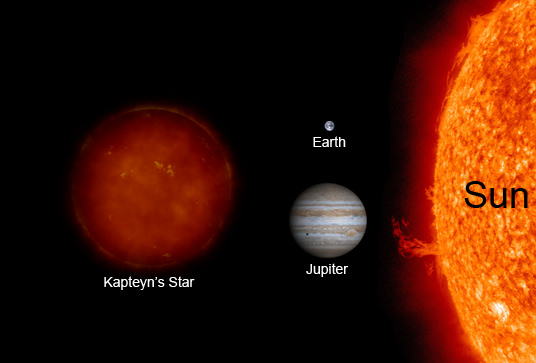
The idea of a planetary system around Kapteyn’s Star, real or not, is an interesting tale of exoplanet science. The original discovery was made using the High Accuracy Radial velocity Planetary research (HARP) instrument at the European Southern Observatory, with supporting observations from the Las Campanas and Keck Observatory. You’d think that would make the discoveries pretty air-tight. The planets discovered orbiting Kapteyn’s Star were discerned using the radial velocity method, looking at the spectra of the star for the characteristic tugging of an unseen companion.
Recent research led by Paul Robertson of Pennsylvania State University suggests that the signal for the discovery of Kapteyn B may in fact be the result of stellar activity. Starspots—think sunspots on our own host star—can mimic the spectral signal of an unseen planet. Analyzing the HARPS data, we know that Kapteyn’s Star rotates once every 143 days. Kapteyn-b’s orbit of 48 days is very close to an integer fraction (143/48= 2.979) making it extremely suspicious.
Universe Today recently caught up with Paul Robertson, who had this to say about exoplanets around Kapteyn’s Star:
Q-How does this put the existence of a planet around Kapteyn’s Star in jeopardy?
“Based on our analysis of the star’s magnetic activity, we determined the star has a rotation period that is three times that of the orbital period for ‘planet b.’ Theoretical simulations have predicted—and subsequent observations have proven—that a star can create Doppler signals at integer fractions of its rotation period (that is, one half, one third, etc). Furthermore, the measurements of the star’s magnetic activity are correlated with the predicted Doppler shifts caused by planet b. In such cases, the simplest explanation for the observations is that the Doppler periodicity is caused by the star’s activity, rather than a planet whose signal coincidentally matches the star’s activity.”
Q-Is it possible to discern the starspot cycle that we’re seeing on Kapteyn’s Star?
“We infer the presence of active magnetic regions—possibly starspots—on the stellar surface through the variability of certain magnetically-sensitive absorption lines in the star’s spectrum. Previous observations suggest that the star’s brightness is relatively constant, so any starspots must be fairly small or not especially dark. It is possible that a space-based photometer such as K2 or TESS might see starspots.”
Q-Are future observations planned?
“Honestly, I don’t know. My paper used data from previous observing programs that are now available in public archives. I certainly think additional data would be quite valuable for Kapteyn’s Star. Given that Kapteyn’s Star is somewhat special, being the closest halo star and one of the oldest nearby stars, I suspect someone will take more observations.”
This discovery is significant either way. An ancient super-Earth orbiting in the habitable zone of a nearby star has had lots of time to get the engine of evolution underway, more than twice the span of the history of life on Earth. But if Kapteyn-b is merely a transitory flicker in the data, it also serves as a good case study in perils of exoplanet hunting as well.
There’s still a good deal of controversy, however, surrounding the existence of planets orbiting Kapteyn’s Star. One very recent paper released just last week on June 30th titled No Evidence for Activity Correlations in the Radial Velocities of Kapteyn’s Star is safely in the ‘pro- Kapteyn-b’ camp.
Discovered due to its high (8 arc seconds per year) proper motion by Dutch astronomer Jacobus Kapteyn in 1898, Kapteyn’s Star is the closest known halo star to our solar system. It’s thought that Kapteyn’s Star might be associated with the large globular cluster Omega Centauri, which itself is thought to be the remnant of a dwarf galaxy gobbled up by our own Milky Way in the distant past.
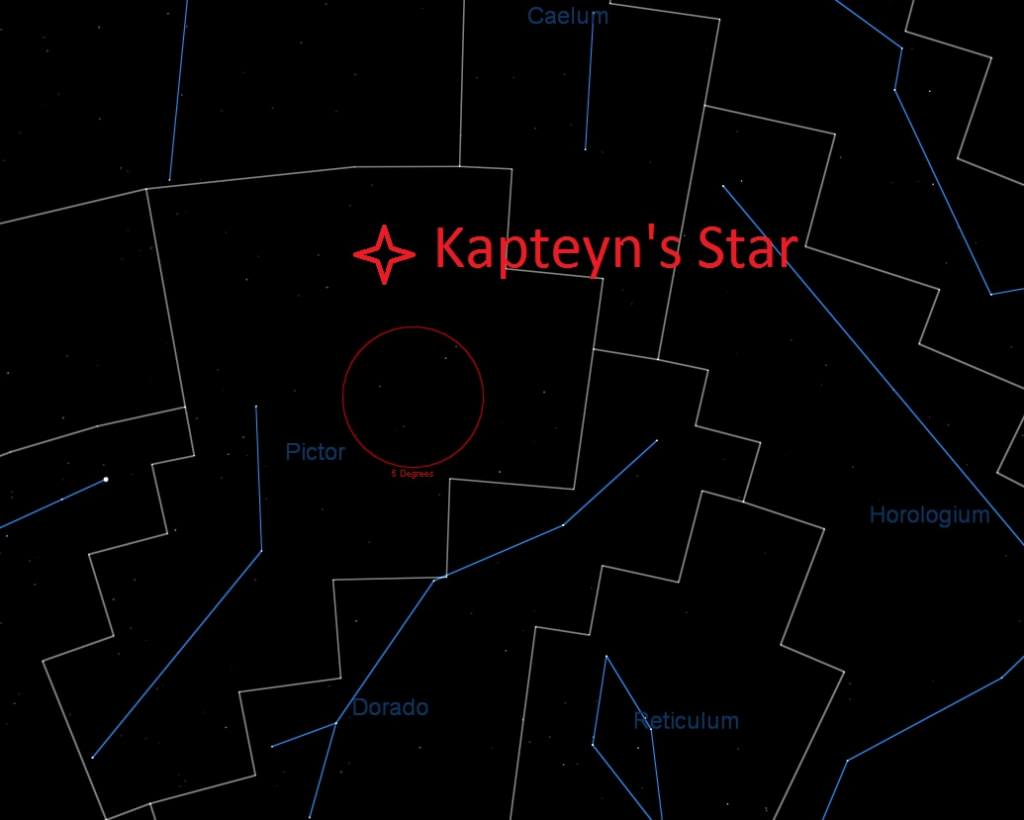
Kapteyn-b also made our list of red dwarf stars visible in backyard telescopes.
And Kapteyn-b wouldn’t be the first exoplanet detection that turned out to be spurious, as the existence of the exoplanet Alpha Centuari Bb announced in 2012 has been called into question as well.
It’s a brave new world on exoplanet science out there for sure, and for now, the worlds of Kapteyn’s Star will remain a mystery.
On the Road to One Thousand Exoplanets
A quiet milestone in modern astronomy may soon come to pass. As of today, The Extrasolar Planets Encyclopedia lists a current tally of 998 extrasolar planets across 759 planetary systems. And although various tabulations differ slightly, very soon we should be living in an era where over one thousand exoplanets are known.
The history of exoplanet discovery has paralleled the course of the modern age of astronomy. It’s strange to think that a generation has already grown up over the past two decades in a world where knowledge of extrasolar planets is a given. I remember hearing of the promise of such detections growing up in the 1970’s, as astronomers put the odds at detection of planets beyond our solar system in our lifetime at around 50%.
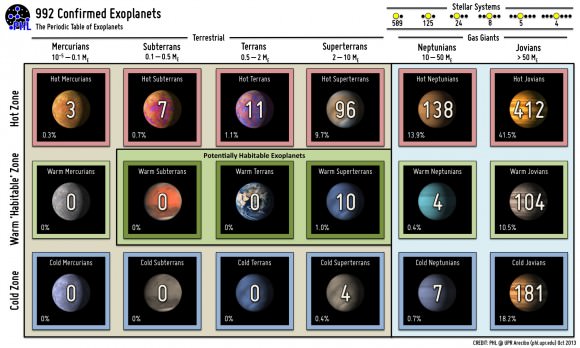
Sure, there were plenty of false positives long before the first true discovery was made. 70 Ophiuchi was the site of many claims, starting with that of W.S. Jacob of the Madras Observatory way back in 1855. The high proper motion exhibited by Barnard’s Star at six light years distant was also highly scrutinized throughout the 20th century for claims of an unseen companion causing it to wobble. Ironically, Barnard’s Star still hasn’t made it into the pantheon of stars boasting planetary worlds.
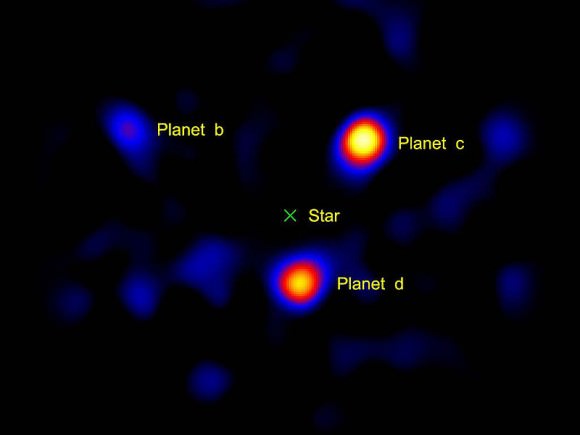
But the first verified claim of an exoplanetary system came from a bizarre and unexpected source: a pulsar known as PSR B1257+12, which was discovered to host two worlds in 1992. This was followed by the first discovery of a world orbiting a main sequence star, 51 Pegasi in 1994. I still remember getting my hands on the latest issue of Astronomy magazine— we got our news, often months later, from actual paper magazines in those days —announcing “Planet Discovered!” on the cover.
Most methods and techniques used to discover exoplanets rely on either radial velocity or dips in the light output of a star from a transiting world. Both have their utility and drawbacks. Radial velocity looks for shifts in the star’s spectra as an unseen companion tugs it around a common center of mass. Though effective, it can only place a lower limit on the planet’s mass… and it’s biased towards worlds in short orbits. This is one reason that “hot Jupiters” have dominated the early exoplanet catalog: we hadn’t been looking for all that long.
Another method famously employed by surveys such as the Kepler space telescope is the transit detection method. This allows a much more refined estimate of a planet’s mass and orbit, assuming it transits the disk of its host star as seen from our Earthly vantage point in the first place, which most don’t.
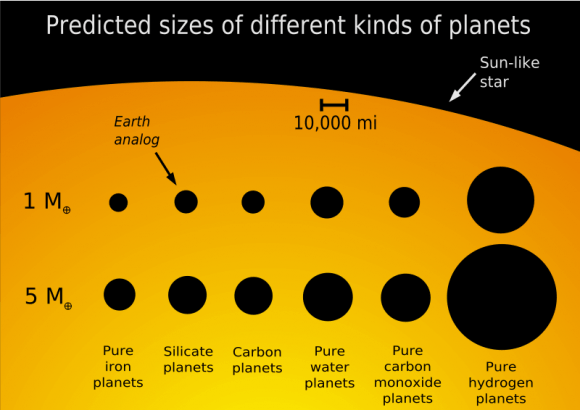
Direct detection via occulting the host star is also coming of age. One of the first exoplanets directly imaged was Fomalhaut b, which can be seen changing positions in its orbit from 2004 to 2006.
Gravitational microlensing has also bared planetary fruit, with surveys such as MOA (Microlensing Observations in Astrophysics) and OGLE (the Optical Gravitational Lensing Experiment) catching brief lensing events as an unseen body passes in front of a background star. Distant free-ranging rogue planets can only be detected via this method.
More exotic techniques also exist, such as relativistic beaming (sounding like something out of Star Trek). Other methods include searches for tiny light variations as an illuminated planet orbits its host star, deformities caused by ellipsoidal variations as massive planets orbit a star, and infrared detections of circumstellar disks. We’re always amazed at the wealth of data that can be teased out of a few dim photons of light.
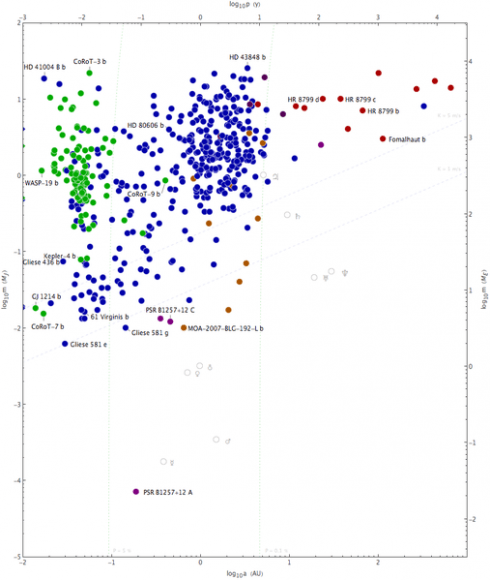
Universe Today has grown up with exoplanet science, from reporting on the hottest, fastest, and other notable “firsts”. A bizarre menagerie of worlds are now known, many of which defy the imagination of science fiction writers of yore. Want a world made of diamond, or one where it rains glass? There’s now an “exoplanet for that”.
Exoplanet news has almost gone from the incredible to the routine, as Tatooine-like worlds orbiting binary stars and systems with worlds in bizarre resonances are announced with increasing frequency.
Exoplanet surveys also have a capacity to peg down that key fp factor in the famous Drake equation, which asks us “what fraction of stars have planets”. It’s been long suspected that stars with planets are the rule rather than the exception, and we’re just now getting hard data to back that assertion up.
Missions, such as NASA’s Kepler space telescope and CNES/ESA CoRoT space telescope have swollen the ranks of extrasolar worlds. Kepler recently ended its career staring off in the direction of the constellations Cygnus, Hercules and Lyra and still has over 3,200 detections awaiting confirmation.
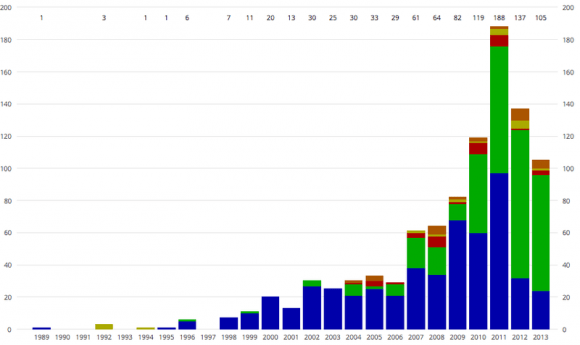
But is a given world Earthlike, or just Earth-sized? That’s the Holy Grail of modern exoplanet detection: an Earth-sized world orbiting in a star’s habitable zone. We’re cautious every time the latest “Earth-twin” makes its way into the headlines. From the perspective of an intergalactic astronomer, Venus in our own solar system might appear to fit the bill, though I wouldn’t bank the construction of an interstellar ark on it and head there just yet.
Exoplanet science has definitely come of age, allowing us to finally begin characterization of solar systems and give us some insight into solar system formation.
But perhaps what will be the most enduring legacy is what the discovery of extrasolar planets tells us about ourselves. How common (or rare) is the Earth? How typical is the story of our solar system? If the “first 1,000” are any indication, we strongly suspect that terrestrial planets come in enough distinct varieties or ”flavors” to make Baskin Robbins envious.
And the future of exoplanet science looks bright indeed. One proposed mission, known as the Fast INfrared Exoplanet Spectroscopy Survey Explorer, or FINESSE, would target exoplanet atmospheres, if given the go ahead for a 2017 launch. Another proposal, known as the Wide Field Infrared Survey Telescope, or WFIRST, would search for microlensing events starting in 2023. A mission that scientists would love to fly that always seems to be shelved is known as the Terrestrial Planet Finder.
But the exoplanet hunting mission that’s closest to launch is the Transiting Exoplanet Survey Satellite, or TESS. Unlike Kepler, which stares at a single patch of sky, TESS will be an all-sky survey looking at a half million stars.
We’re also just approaching an era where spectroscopy may allow us to detect exomoons and the chemistry taking place on these far off exoworlds. An example of an exciting discovery would be the detection of a chemical such as chlorophyll, a chemical that we know on Earth only exists as the result of life. But what a tantalizing discovery a blip on a graph would be, when what we humans really want to see is the vista of those far-flung alien forests!
Such is the exciting era we live in. Congratulations, humanity, on detecting 1,000 exoplanets… here’s to a thousand more!

